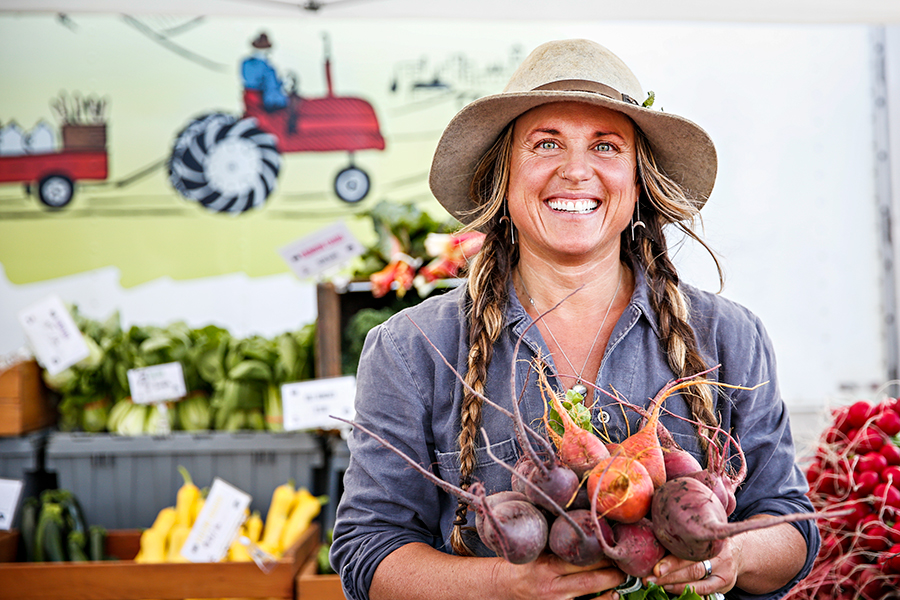As temperatures drop and nighttime frost begins to threaten gardens in the Flathead Valley, it’s time to harvest those fruits and vegetables before winter takes hold.
Food preservation expert Kathie Lapcevic says canning and dehydrating have gained popularity in recent years, mostly in response to an upsurge in gardening and people’s desire to be more self-sufficient.
When Lapcevic started teaching a food canning class at Flathead Valley Community College 12 years ago, she barely had the minimum number of six students to teach the class. But in that last few years, she’s had a waiting list for the class, and even took a break from it this fall.
Lapcevic says out of all her do-it-yourself posts on her blog, Homespun Seasonal Living, her preservation posts are by far the most popular. When it comes to food preservation, she says there are two schools of thought.
“There’s the crunchy, hippie people, and then there’s people who want to prepare,” she said.
Not only do people like the idea of controlling their food and knowing what’s in it, she says organic groceries are expensive, making gardening and preserving a cheaper alternative.
“People want to know what’s in their food,” Lapcevic said.
Farmer Rebecca Ulizio, who co-operates Two Bear Farm in Whitefish, says she does a fair amount of canning, but she also dehydrates food and keeps a lot of goods in a root cellar.
While root cellars were the norm back in pre-electricity times, cellars used for food preservation don’t typically exist in modern homes. That’s why canning and dehydrating are beneficial.
Here’s a guide to food preservation this fall.
CANNING METHODS
Fresh foods will obviously spoil if they are left out for too long. But with canning, you can have fruits and vegetables all winter long without heading to the grocery store. Canning creates a vacuum-tight seal, which removes oxygen, destroys enzymes and prevents bacteria and mold growth for up to 16 months.
There are two common methods of canning: boiling water and pressure cookers.
Boiling Water
Boiling water is used for foods with a higher concentration of acid, like tomatoes and fruits. High acid foods have a pH of 4.6 or less, which prevents Clostridium botulinum spores from producing a toxin that causes botulism, a rare, fatal illness causing paralysis.
In this method, jars of food are completely covered, heated with boiling water and cooked for a specified amount of time using a canner. Salsa usually takes around 20 minutes.
Ulizio says this is her favorite way to can because it takes less time, and she says she’s more likely to eat foods with higher acid levels from a can.

Pressure Cooker
Pressure canning is used for food with a pH of more than 4.6, which includes most food. It’s the only safe way to can vegetables, meat, poultry and seafood.
Jars are heated in a pressure cooker with a temperature of at least 240 degrees Fahrenheit, which can only be reached with a pressure cooker. Clostridium botulinum dies in boiling water; the spores, however, can withstand the temperatures and grow in low acid food without oxygen, making pressure cooking absolutely necessary.
This method takes much longer than boiling water. Lapcevic says one pint of beef takes 70 minutes.
While pressure canning is used for most food, Ulizio says she isn’t a fan of the method and only cans with boiling water. She says since pressure canning requires such a high temperature, it causes a nutrition loss in food.
“I’m not a fan of pressure cooking unless it’s a sauce,” Ulizio said.
DEHYDRATING
Dehydrating food is a simpler form of preservation and only requires an electric food dehydrator.
“It’s super easy and they last forever,” Ulizio said.
She says sungold tomatoes are her favorite to dehydrate. She simply cuts the tomato in half and sets it on the dehydrator. It’s recommended to set the dehydrator to 145 degrees and rest for six to 12 hours for tomatoes. After the tomatoes are dried, they can sit on the shelf and are usually used for homemade tomato sauces.
While all fruits and vegetables can be dried, Ulizio says to avoid broccoli.
“You certainly don’t want to dehydrate broccoli because it smells really bad,” she said.
While there are many different ways to preserve foods, personal preference usually decides most methods. Regardless of your choice, you’ll take far fewer trips to the grocery store this winter.
“It’s just a good skill to have,” Lapcevic said.
